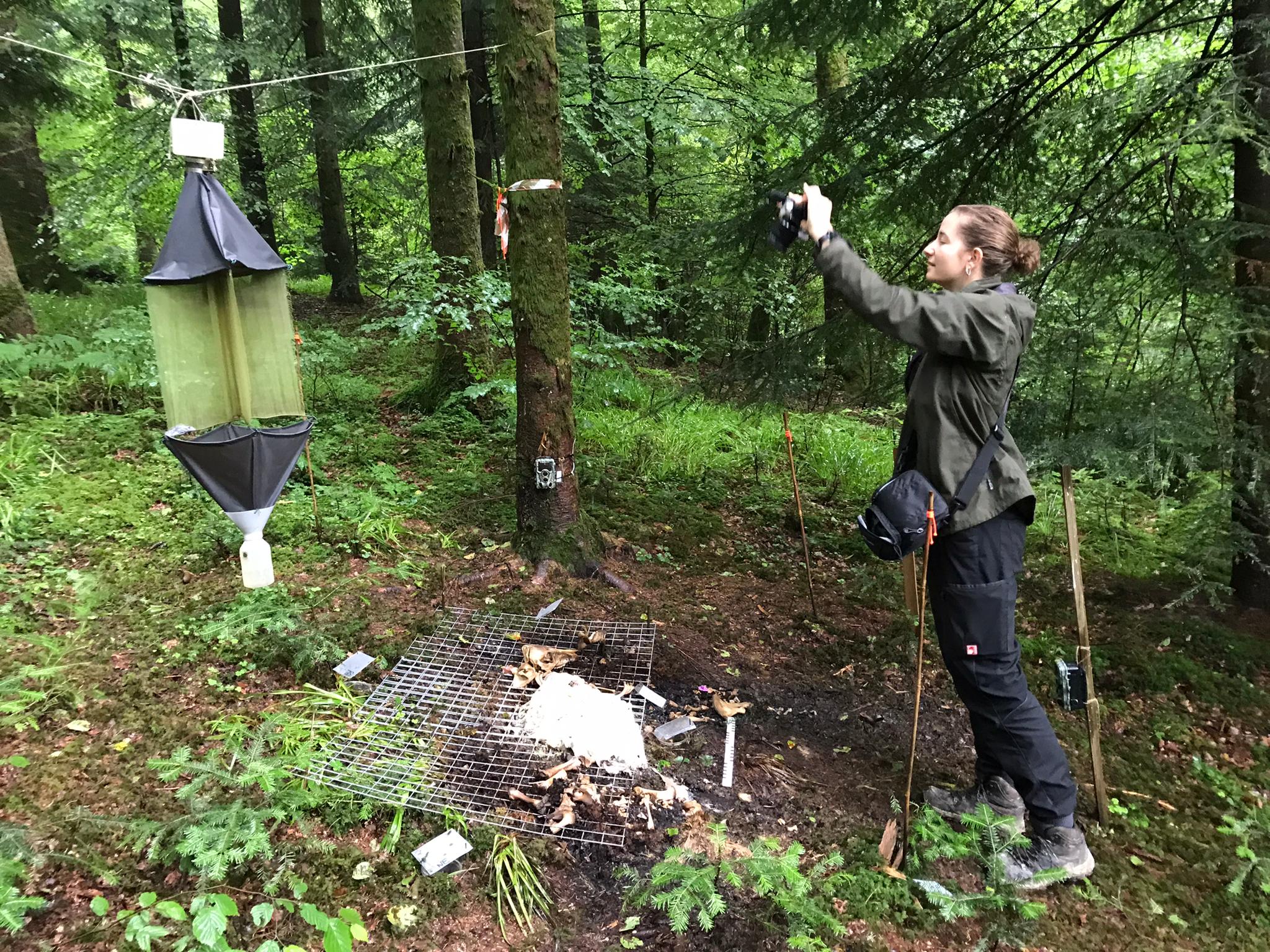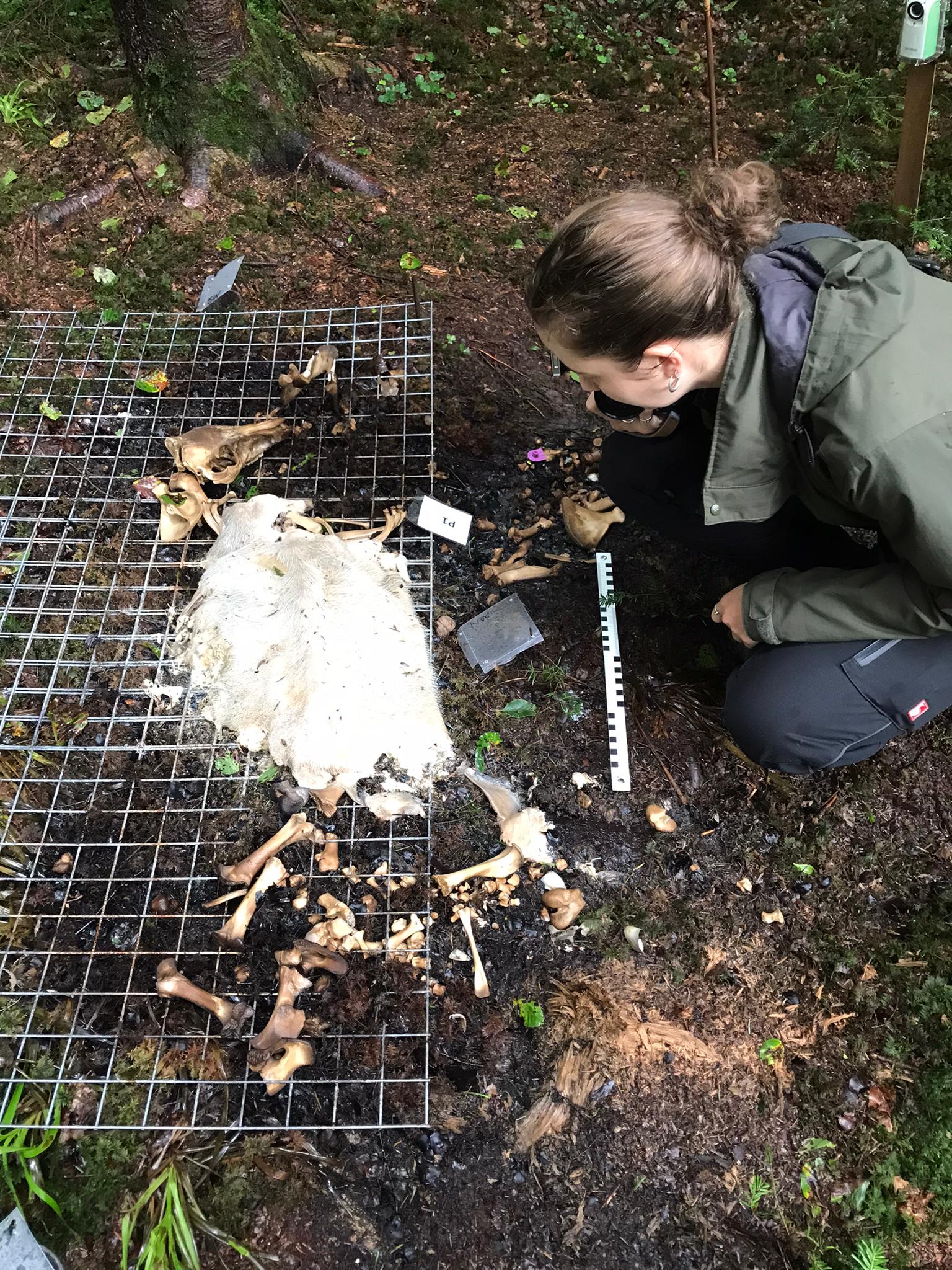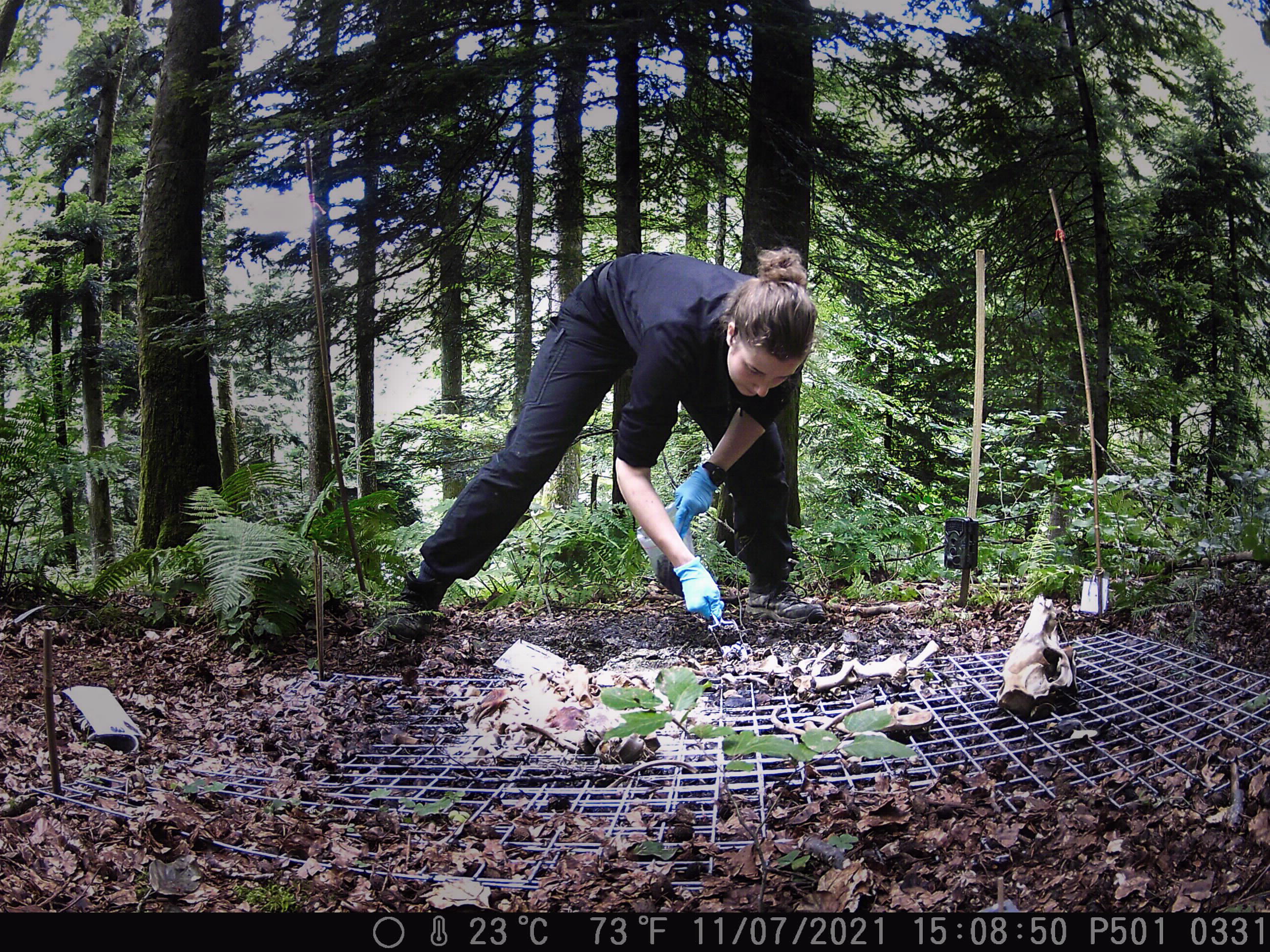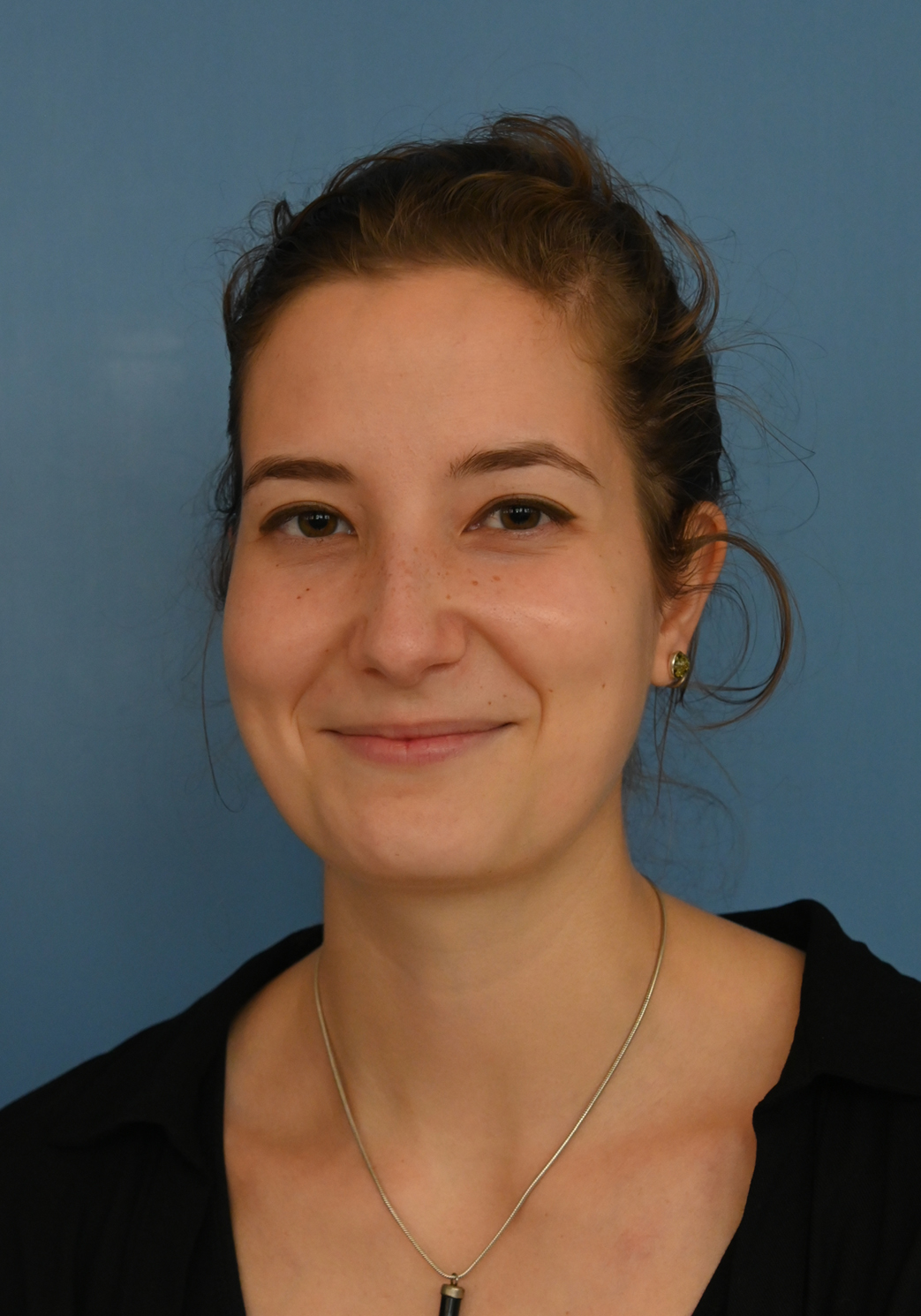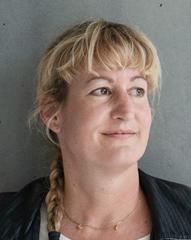Decomposition under the microscope
Researchers at the University of Bern have investigated the process of decomposition on pig carcasses left in nature. The researchers discovered that the previous standard method for assessing decomposition in Switzerland needs to be adapted – with an impact on forensic analysis. The method presented by the researchers aims to better determine the post-mortem interval.
A dead body decomposes with the help of various organisms – such as intestinal bacteria, flies, maggots and beetles. This makes it difficult to establish the post-mortem interval of cadavers in forensics: the more advanced the decomposition, the harder it is to determine the time of death. Various methods therefore have the goal of correlating the degree of decomposition with the postmortem interval. With respect to this, the body is divided into three areas – the head and neck, the trunk and the extremities – and its condition is assessed using a point value system. The findings from the three areas are then added together, resulting in the total body score (TBS).
Using specific formulas, forensic scientists can use the total body score to calculate the approximate time of death in forensic cases. These calculations are often inaccurate, though, due largely to the environmental conditions in which the bodies are found. Sandra Lösch from the Department of Anthropology at the Institute of Forensic Medicine at the University of Bern explains: “It is therefore necessary to carry out tests under controlled conditions and to investigate the influencing factors. ”Tests on human cadavers aren’t allowed in most countries, though. Animal cadavers are therefore studied, usually pigs. “Although the decomposition of humans and pigs differs in many respects, valuable findings can still be drawn from such experiments which can improve the forensic methods,” explains Lösch.
Other regions, other decompositions
A study by an international research team led by the University of Bern which was recently published in the Journal of Forensic Sciences has now investigated decomposition processes in pigs in Switzerland and compared its findings with a similar study from South Africa. Lara Indra from the Department of Anthropology at the Institute of Forensic Medicine at the University of Bern, lead author of the study, explains: “It isn’t so surprising that the decomposition processes in Switzerland and South Africa are different. We are the first to describe the specific differences, though, and have succeeded in developing a model which is adapted to Switzerland.”
The researchers demonstrated that the South African model – which investigated decomposition in a hot and dry climate in a closed-off area – isn’t appropriate to Switzerland. The differences can be explained by the rapid and considerable colonization of the Swiss carcasses with fly maggots, the frequent rainfall, as well as the incursions by scavengers such as foxes that occurred in the Bern experiment. These influences change the decomposition process and its duration – maggots, for instance, accelerate the process considerably. The researchers at the University of Bern are the first to systematically examine the South African model in order to assess the stages of decomposition – so far the only available method to score exposed pig cadavers worldwide – for a different geographical region. The results demonstrate that regional differences in the models used for assessing the stages of decomposition need to be taken into account. “As this assessment provides the basis for determining the time of death, a suitable model significantly increases its accuracy,” explains Indra.
Step by step towards the time of death
The decomposition of cadavers depends on where they decompose – whether in the open air, exposed to sunlight or not, or in a dry or damp environment. “The effects of these external factors on the processes of decomposition need to be better researched so that we can draw the right conclusions about the post-mortem interval of a cadaver on the basis of its condition,” explains Indra. This is an important part of her work: “Due to the natural conditions in Switzerland, we regularly deal with forensic cases with bodies that have been concealed in nature for long periods of time before they are discovered,” explains Lösch. This includes people who fall to their deaths while hiking in remote areas – and whose bodies are only discovered years later. “In such cases, our work will enable the cantonal authorities to obtain more precise details about the time of death – and for the bereaved to receive more accurate information about the fate of their deceased family member,” concludes Lösch.
Information about the publication:Indra, L., Giles, S., Alfsdotter, C., Errickson, D., and Lösch, S. Evaluation of porcine decomposition and total body score (TBS) in a central European temperate forest. J For Sci (2024). DOI: 10.1111/1556-4029.15497 |
The Department of Anthropology at the Institute of Forensic MedicineThe Department of Anthropology at the Institute of Forensic Medicine in Bern examines mummies, skeletons and bone fragments for forensic medicine and cultural history purposes. Research in such cases is primarily concerned with identifying the unknown dead person and establishing the cause of death in a forensic context. From an archaeological perspective, the focus is on addressing academic questions regarding the composition of populations, the prevalence of diseases, nutrition, social stratification and the origins of populations. The Department of Anthropology relies on the following methods when researching material from different regions and temporal contexts: anthropological/morphological and histological diagnostics, mass spectrometry for stable isotope ratios, ancient DNA analyses and imaging processes. |
2024/03/06

